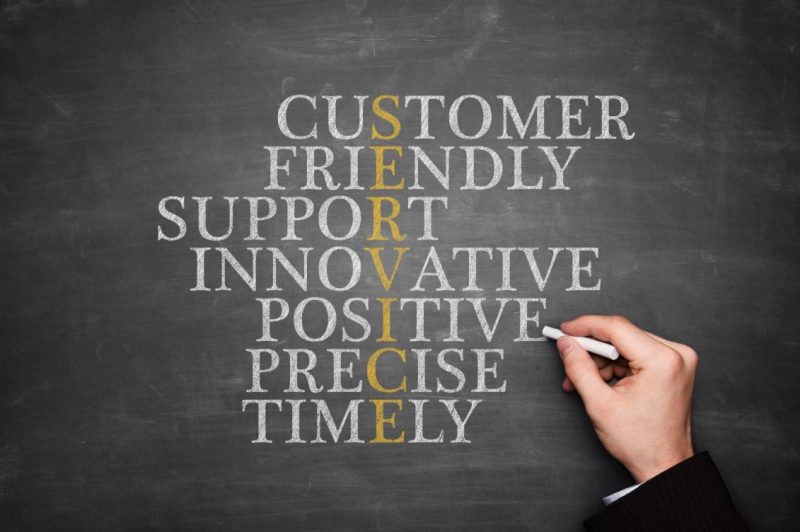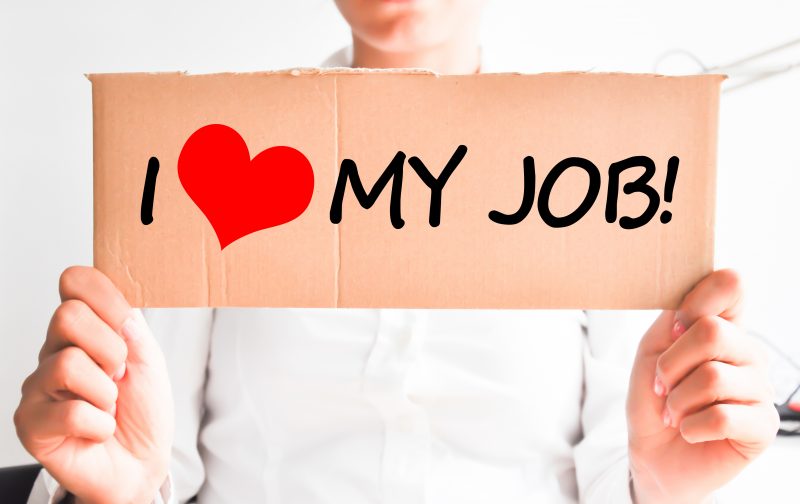
I am an avid reader. I actually set a goal on my GoodReads profile to read at least 60 books this year. This goal forces me to proactively find ways to be a life-long learner and causes me to seek more knowledge from new, and sometimes previous, sources. This morning I began reading a new book, albeit one I have read before, so to have the “Introduction to the New Edition” of this book jump right out and immediately grab my attention was something wholly unexpected.
If you haven’t read Carl Sewell’s business classic, Customers for Life: How to Turn That One-Time Buyer Into a Lifetime Customer, you definitely need to add it to your list. But for the purpose of this article, I want to focus on the “What’s New?” section of the revised addition of this book because I believe the author provides some pearls of wisdom, especially about differentiating yourself in the market. I hope to pass along the epiphany I received from Sewell’s words, which to me boiled down to him asking and answering the question: “What’s Your Competitive Advantage?”
“Customers today are better educated, have traveled more, and have been exposed to more things than ever before.” Gone are the days when a customer doesn’t already know everything about you, maybe even more than you know about yourself, and they certainly know more about you than you know about them. Because they know so much, they also expect more in today’s world. “It’s no different when it comes to [customer] service,” Sewell says. “Today’s customers have experienced better service, and they like it. They’re getting used to it. Heck, they’re even insisting on it.”

Expecting a certain standard of Customer Service has become such a fabric of our lives that many people today will often complain when they don’t receive great Customer Service. The even more unfortunate side of this issue is that many of those same customers who would complain if the service was poor, simply take it for granted when they are the beneficiary of great Customer Service. Wouldn’t it be great if every person who had a great Customer Service experience with our brand was as vocal and timely in their feedback as those who don’t hesitate tell us, and the rest of the world, how much we have disappointed them with their perceived lack of Customer Service on our part?
Sewell goes on to say, “The result is that you can no longer say to your customers, ‘Please choose between low prices and good service.’ Every single time you do, they’re going to respond, ‘I want both.'” So there you have it. ‘Good’ service is now a commodity item…it is simply the ante every company must pay to have a shot at playing the hand of keeping your existing customers and trying to gain new ones. Sewell furthers this point by bluntly advising, “When it comes to providing service, we have no choice. We either have to improve or close up shop.” So, if everyone must provide good service to their customers just to remain in business, where do we find the competitive advantage to remain relevant in the marketplace? Sewell’s next statement in the book answers that: “Our only source of competitive advantage is our people and the service they provide.” (emphasis added).
“When it comes to providing service, we have no choice. We either have to improve or close up shop.”
– Customers for Life by Carl Sewell
That’s just it. That gets to the heart of the success (or failure) of any business: did I connect in a positive way with my customers. It always, every single time, comes back to the people. Long-term business relationships are just that, they are connections and interactions between individuals, human-to-human, one at a time, over time. Cultivating a team of individual employees who truly want to help one another and to help their customers have a positive experience through interactions with your brand is the single most effective way to ensure you will continue to have customers to serve in the future. We must be willing to empathize with our customers, to adapt and grow with their changing needs, to focus more on the person rather than the policy or focus on the experience rather than the transaction.
Building a team within your brand who not only know how to care for customers (both internal and external customers) but who also genuinely want to do so is the most important investment in any company. One of my favorite quotes about investing in training and culture is something that floats around LinkedIn and the internet quite a bit. As the story goes, a CFO is worried about the rising costs of training and developing employees at the company and asks the CEO: “What if we invest in developing/training our people and they leave?” and the CEO, understanding the cost of employees who are not fully committed to the success of the business and to their customers calmly replies: “What if we don’t and they stay?” The anecdote invokes a chuckle because we all ‘know’ that training and developing culture and creating great Employee Experiences within our brand are all important things to do…and yet how many of us are actually doing so to the point where our people become our competitive advantage in the marketplace?
Employee turnover is costly; in fact it can be one of the most expensive ‘waste’ areas in an organization. But sometimes helping the wrong employees ‘turn over’ in order to find the right employees, those who further solidify your competitive advantage, is a way to build long-term health and better customer satisfaction and customer experience in your organization. Pruning the branches of a fruit tree is crucial to ensuring the best possible harvest. Keeping those branches on the tree who don’t produce the tastiest fruit only undermines the total productivity of the rest of the tree.

Strengthening the branches of your organization by cultivating the people who bring the competitive advantage of exceptional Customer Service with them to work every single day pays immense dividends over time. Helping those who don’t share that same vision and passion for your customers find other opportunities outside of your team can be an important way to further solidify your competitive advantage. Poor customer experiences caused by well-meaning employees can go viral and cause significant damage to your brand. As a prime example, just ask United Airlines about the fallout they experienced from the man who was forcibly dragged off of an oversold flight in the recent past. No one intended for that situation to escalate to the extent that it did, and yet the repercussions have been far reaching and the brand image of United Airlines was significantly tarnished. Why? Because for just a brief moment, someone (or a group of someones) failed to see the person/people involved in the situation and the policy, procedure, and protocol became more important.
Poor customer experiences caused by well-meaning employees can go viral and cause significant damage to your brand.
Companies and brands all over the world now use that instance as a Case Study to train their own people on how to resolve conflict and how to make sure to always see the individual involved as a person rather than an object in the way or hurdle to overcome. Developing an internal culture and training your employees to a standard where the people come first, both internally and externally, has an immeasurable return on investment. Ask yourself the following question when interacting with a customer: “What is the cost of not seeing the other person in this interaction…both to myself and to me/my company?” Sincerely answering that question can often provide the necessary insight in order to make the best decision for all parties involved and further cementing the positive image of your company to your most important customers; that’s Customer Experience.
Customer Experience (CX) is the new must-have title and the department in many large organizations that has gained a seat at the proverbial table…and rightfully so; a loyal customer for life is a priceless asset to any business. But to truly achieve exceptional Customer Experience (CX), we must first get our houses in order and create an internal environment and culture where the Employee Experience (EX) is front of mind so our people know we have their backs and they can in turn see the people they are serving…our customers. So join the Employee Experience (EX) movement. Let’s proactively build a competitive advantage for those companies and brands who embrace Employee Experience (EX) that drives Customer Experience (CX). This is our mission at Snowfly: To help our clients build exceptional Employee Experiences within Customer Experience: #EXinCX
For more help or further insight into how to develop the habit of seeing others as people instead of as objects, check out the Arbinger Institute and/or pick up their book, The Anatomy of Peace. The Arbinger Institute specializes in changing Mindset through the training of individuals and organizations on how to get ‘out of the boxes’ we put ourselves and others into so that we are better able to see one another as individuals who are worth serving. That kind of clarity and perspective can literally change the world for the better…and Arbinger is doing just that.

